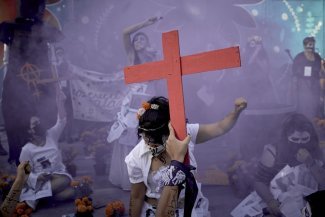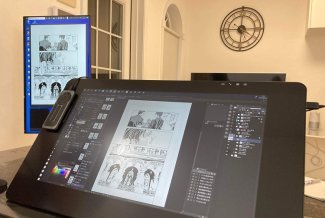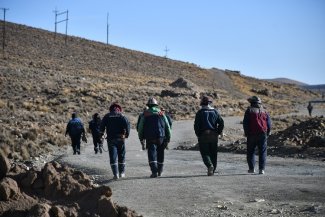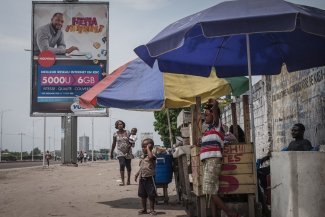
Works still have not commenced on the Nicaragua Interoceanic Grand Canal, a project launched in 2013 by the Nicaraguan government and the Hong Kong Nicaragua Development Group (HKND), owned by a Chinese telecommunications company.
A budget of US$50 billion was announced for the overall project, which also includes the construction of two ports, an international airport, free trade zones, a railway and even an oil pipeline. It is a gargantuan project amounting to almost five times Nicaragua’s GDP, and is expected to bring “wellbeing and happiness to the Nicaraguan people”, according to its president, Daniel Ortega.
But one section of the population has been forgotten in this equation. Over 100,000 Nicaraguans live in communities scattered along the route of the project, from Punto de Aguila on the Caribbean coast to Brito, on the Pacific coast. For the last three years, they have been living under the daily threat of eviction.
The core of the problem lies in Article 12 of Law 840, the legislation regulating the overall canal project, which grants the company the right to expropriate “any property reasonably required” for the project. And this applies to all property, be it public, private or that belonging to Indigenous communities.
“The financial compensation they are offering us is pitiful. They are talking of rehousing us in apartments, but we are farmers, so how will we make a living?” asks Francisca Ramírez Torres, coordinator of the Consejo Nacional en Defensa de Nuestra Tierra, Lago y Soberanía (National Council in Defence of our Lands, Lake and Sovereignty), representing almost 300 communities opposed to the project.
“We have already organised over 60 demonstrations at local, regional and national level since the protest movement began and we will continue for as long as possible.”
Their campaign has not been without incident. At the end of 2014, during a demonstration in Tule, in the department of Rio San Juan which is south-east of the capital, riot police charged at locals who had been protesting for over a week. Two people were killed and several dozen were injured.
A few weeks later, a demonstration was held in the capital city, Managua.
“They prohibited bus companies from taking us there, and then slowed us down as much as they could. We used trucks that are usually used to transport animals. They scattered broken glass along our route and stepped up the police checks. What would usually be less than a ten hour journey took us 56 hours,” Eugenio Hernández Villara, who lives in the San Francisco settlement in Agua Fria, told Equal Times.
Day after day, those who are resisting the project are being asphyxiated both socially and economically.
“The prices of what we sell on the market are controlled, investments into our roads and schools have been cut off and the doctors sent to the region are only allowed to give us doliprane or ibuprofen,” says Torres.
A ploy to seize the land?
Determined to fight through legal channels, the canal’s opponents have organised a range of initiatives.
Over 10,000 protest letters have been sent to the government and 34 legal challenges have been filed as well as a citizens’ initiative collecting over 28,000 signatures. All to no avail.
“The problem is that everything was approved within three days in the National Assembly, without any debate or public consultation. There is a huge lack of transparency,” explains Vilma Núñez de Escorcia, president of the Nicaraguan human rights centre CENIDH, one of the few local organisations supporting the inhabitants.
There is no or virtually no mention of the matter in the national press. Carlos Fernando Chamorro, a journalist with Canal 12, one of the country’s only media outlets talking about the situation, tells Equal Times.
“The majority of the newspapers, radio and television stations in the country are linked to the government, so for them the problem doesn’t exist. The others focus on the ‘positive news’. You have to use cunning, journalistic tricks and to be lucky to get into the area.”
Why have the works not yet started? When Equal Times looked into the issue in May 2014, the project was supposed to be launched in December of that same year. Now the government is talking of December 2016.
The track record of Wang Jing, the chairman of HKND, begs caution. The South China Morning Post, based in Hong Kong, has revealed that in 12 of the 20 countries where the company claims to have done business, there is no trace of any results.
The situation seems to bear out the theory propounded by opponents of the project. “The canal is not economically viable, all the experts say so. The goal is to take over the land for touristic and economic projects,” insists Escorcia.
According to Le Monde newspaper: “It involves Nicaragua’s most fertile lands and Lake Cocibolca, the second-largest freshwater lake in Latin America.”
“They have already done the same thing, expropriating the lands of seven communities for a hydroelectric plant project. The project never saw the light of day, but the small farmers never got their land back,” rails Torres.
For her and the other inhabitants of the region, the situation is inconceivable. The same phrase is heard over and over: “We would rather die than give our land to the government.”








